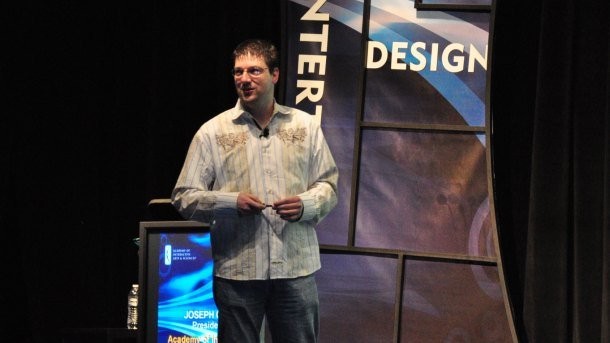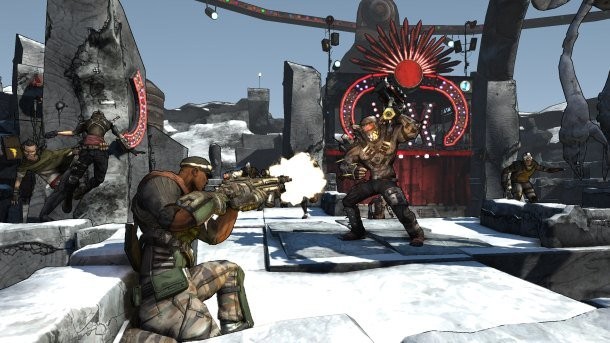Please support Game Informer. Print magazine subscriptions are less than $2 per issue
Gearbox’s Randy Pitchford On Perfection, Motivation

Gearbox Software’s president Randy Pitchford started off the last day of DICE with a deeper look at his studio’s philosophies and strategies.
Before he entered the world of game development about 15 years ago, Pitchford says he worked as a tour guide at Universal Studio and was a professional magician. His magic paid for law school, but Pitchford’s wife convinced him that law wasn’t his passion. After leaving school, he got a job at 3D Realms, where he worked on Duke Nukem 3D (he left before Duke Nukem Forever was under way). After leaving, he started Gearbox with four other guys. The first dollar from the company’s first milestone check from work on the award-winning Half-Life: Opposing Force is framed in his office.
After the success of that game, the studio more than doubled its staff, and many of those employees are still at the company. Valve’s Gabe Newell convinced Pitchford to take a look at console development, and Gearbox brought Half-Life to the PlayStation 2. From there, Pitchford worked on console games 007 Nightfire, Tony Hawk Pro Skater 3, Samba de Amigo on Wii and the PC version of Halo. Those experiences taught the company a lot about working with publishers, Pitchford says.
With Brothers in Arms: Road to Hill 30, Gearbox dipped its toes into developing its own IP. That laid the foundation for Borderlands. As Pitchford tells it, Borderlands’ October release date pitted the game against Halo: ODST, Modern Warfare 2 and Dragon Age: Origins. Analyst Michael Pachter said that the game was essentially being sent out to die. Fortunately for Gearbox, the game went on to sell more than three million copies, and a steady stream of DLC, including the upcoming final installment the Secret Armory of General Knoxx, has stoked the game’s popularity.

Now the company has more than 170 employees, and Pitchford says he feels as though the company is just getting started. Not counting for Borderlands, the company has pushed more than 20 million units, with gross revenue of $500 million. Not too bad for the company’s first 10 years.
Pitchford next laid out the company’s strategy. First, the company wants to entertain people. Next, they set out to entertain themselves. It’s a pretty obvious plan, but Pitchford says that by having it spelled out it makes it easier to meet those goals. How can you measure success? Pitchford uses the metrics of how many people are entertained and how people feel about their games. Time is critical to maintain customer goodwill, he says, referring to the long-delayed Duke Nukem Forever. When it comes time to measure the goal of entertaining themselves, Pitchford says it gets a bit trickier. He splits that goal into three parts—developing creative products, being happy (a company hiring policy called the “three Ds” spells out no drama, no dicks, no douchebags), and making money. It’s a business, after all.
Pitchford says developers face something called the artist’s dilemma. Creative minds can visualize perfection, but implementing those ideas is impossible. With that in mind, finding the sweet spot between investment, quality and perfection is difficult. What’s the solution? Pitchford says the Gearbox model has three components. First, aggressive profit sharing gives employees a financial motivation to create successful projects. Gearbox’s employees split 40 percent of its profits, to give an idea of just how aggressive that profit sharing is. Secondly, bonuses are given for reaching publisher milestones, ensuring that development is working according to schedule. Finally, three percent of a game’s budget is set aside for discretionary merit bonuses, giving team leaders the power to reward contributions. Combined, these three parts give people within Gearbox a better sense of when to finish development in an attempt to strike the balance between perfection, quality and investment.










